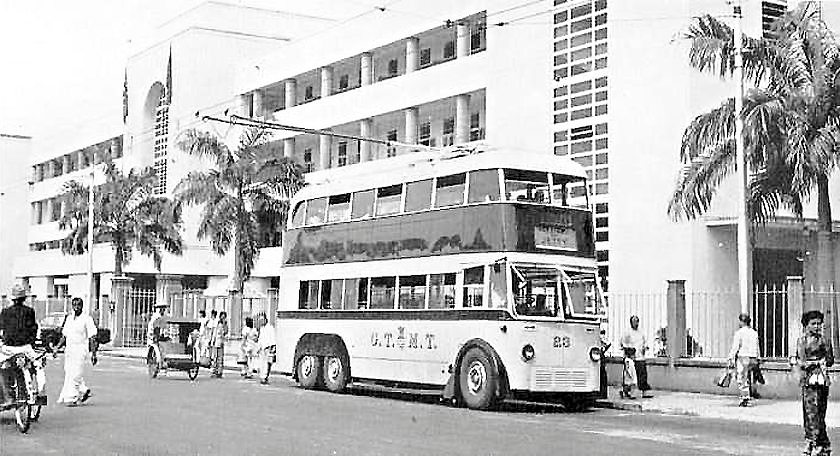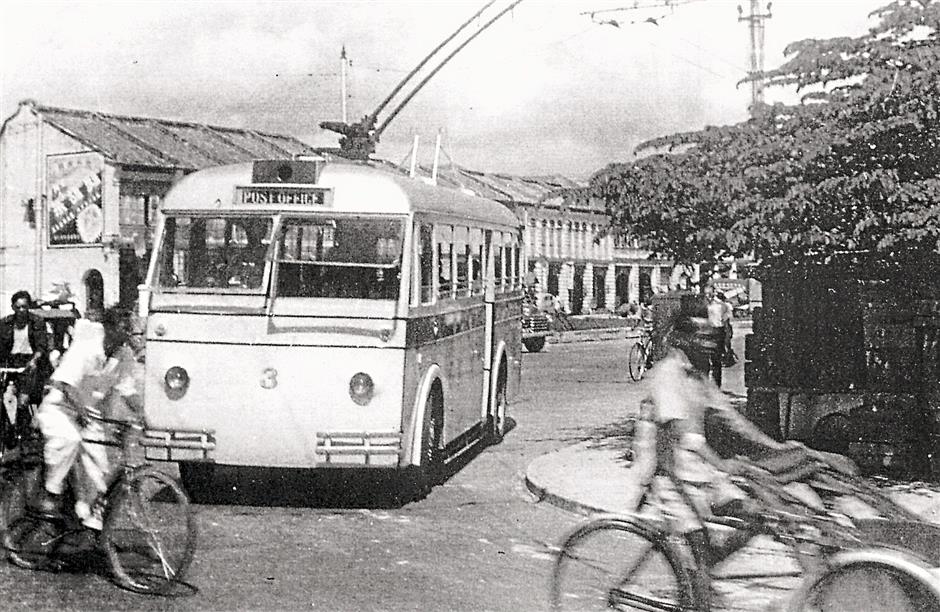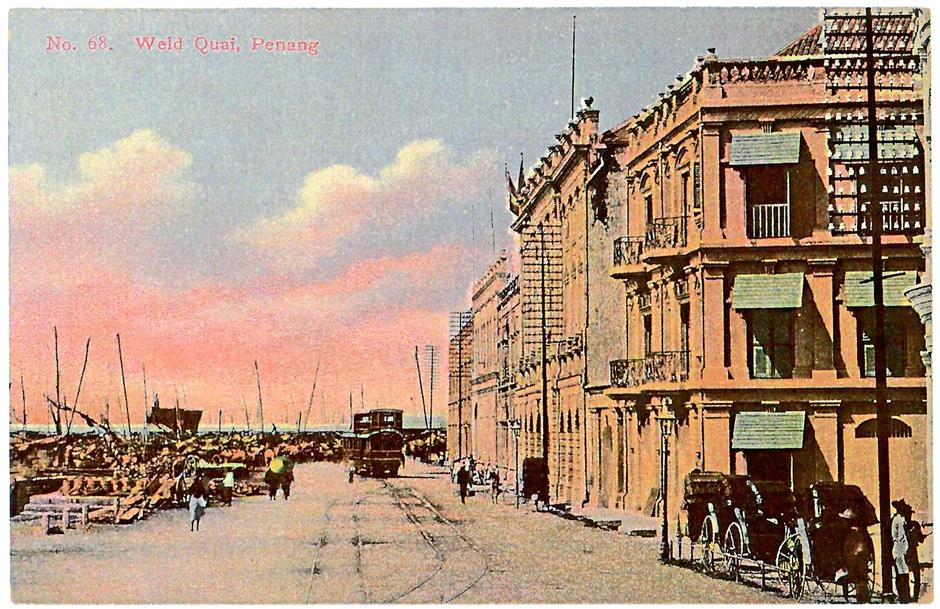Through the wheels of time January 29, 2021 – Posted in: In The News, Reviews – Tags: penang history, Penang Trams, trams
Arnold Loh, The Star
THE nostalgia hits many locals on busy Penang Road.
From the Chulia Street-Penang Road junction towards Komtar, commuters will come across parallel steel tramlines, built sometime between 1880 and 1906.
Road builders dug them up by accident in 2004 while replacing underground utility cables.
To make them invulnerable to the grinding wheel of time, the road running along the tramlines is encased not in normal asphalt but solid concrete.
This preserved vestige of Penang’s history tells of the state’s adventurous exploits in developing public transport.

At a time when English inventors were still working on how to build the first internal combustion engine, one chap remembered only as Mr Gardiner went on record as the first man who ran a steam-powered tram in Penang.
In the early 1880s, Gardiner ran a steam tram from Weld Quay to Air Itam. It was 12.5km, out of which 4km were set into roads including Penang Road and Datuk Keramat Road.
In 1885, another tramline was created from Weld Quay to Waterfall Gardens (Penang Botanic Gardens today) and 11 steam-powered trams were running these routes.
An important advantage of trams for George Town was that tramlines could be built at street level.

So trams could share the road network and passengers could get on or off without the need for train stations.
There were no cars yet, so the trams happily shared the roads with horse buggies, cyclists and rickshaws.
In 1898, the tram company – renamed Kerr Stuart’s Penang Steam Tramway Ltd – resorted to animal power when the local government felt steam trams were too dangerous for other road users.
The company laid another light rail network and used horses to pull the trams from Magazine Road, Penang Road, Chulia Street and Weld Quay.
This archiving of Penang’s push for tram-based public transport is recorded in Penang Trams, Trolleybuses and Railways by Ric Francis and Colin Ganley, published by Areca Books in 2006.
Think City Sdn Bhd chairman Datuk Anwar Fazal wrote the foreword of the book and stressed the fact that Penang was a regional trendsetter for public transport back in the day.

“We had a public transport system which any city would have been proud of. We had a municipality that provided leadership and resources, and showed how public services could be initiated, organised and managed in the best of ways,” Anwar wrote.
The advent of public electric supply saw another surge for tram transport and this time, using electric trams.
Power lines were installed above existing tramlines and electric trams, with trolley poles on top and looking like a pair of insect antennae, plied the streets.
Between 1905 and 1922, electric trams were profitable and up to 24 trams were operating an 11-minute service at the peak, with lines to Air Itam, Jelutong and the prison.
That antique tramline on Penang Road that you see today was closed in 1921, when it had grown so old that derailment became common.
It was at this time that internal combustion engines came into play, with two Thornycroft petrol buses replacing electric trams on this route.
But these petrol buses were said to be “notoriously unreliable” and authorities had still wanted to rely on the overhead power lines.
So petrol buses took a back seat as trolleybuses rolled in.
Trolleybuses did not need the rails. They ran on rubber tires and were powered by electricity supplied by the tram power lines.
The first trolleybuses hit Penang streets in 1925 and the last electric tram was scrapped in 1936.
As World War II approached in 1940, defence forces commandeered motorbuses for military use and since the trolleybuses could only run under fixed power lines, the army was not interested in them and Penangites continued to enjoy public transport despite the war.
The trolleybuses served on past the war and in 1956, George Town Municipal Transport Board upped the service by buying five secondhand London Transport double-deckers. There were a total of 41 trolleybuses by then.
But advancements in petrol and diesel engines were taking place abroad, and an infatuation for motorbuses was happening.
These were called “mosquito buses” and private companies were getting contracts to operate them.
Eventually, even the municipality started buying motorbuses.

By July 1961, the last of the trolleybuses were sold for scrap and Penang public transport system had fully adopted motorbuses.
“Many old cities preserve their tram system.
“It is so unfortunate that our society fell in love with cars to the point that it destroyed and undermined the trams.
“We thought cars were the solution, but public infrastructure is now being burdened by them,” said Anwar in an interview.
But the trams may not be all lost.
Last week, 79 years after the last electric tram left the streets, the Penang Government announced that the trams would be back in conjunction with the RM27bil Penang Transport Master Plan.
“Within the heritage zone, we have to go back to the tram service. Reviving this system will make Penang unique and romantic,” Chief Minister Lim Guan Eng told a press conference before handing the letter of award to SRS Consortium chief executive officer Datuk Lin Yun Ling.
The consortium is responsible for upgrading Penang’s overall public transport system and mitigating traffic congestion.
Public-listed Gamuda Bhd, Loh Phoy Yen Holdings Sdn Bhd and Ideal Property Development Sdn Bhd form it.
Anwar, in his foreword of the book, wrote that Penang had suffered from “a frenzy of hasty modernization and misplaced priorities”.
“We have paid a high price through traffic jams, endless road building and widening, loss of greenery and pollution. Only after the trams were gone did people appreciate them,” he said.
This article first appeared in The Star on 22 Aug 2015
